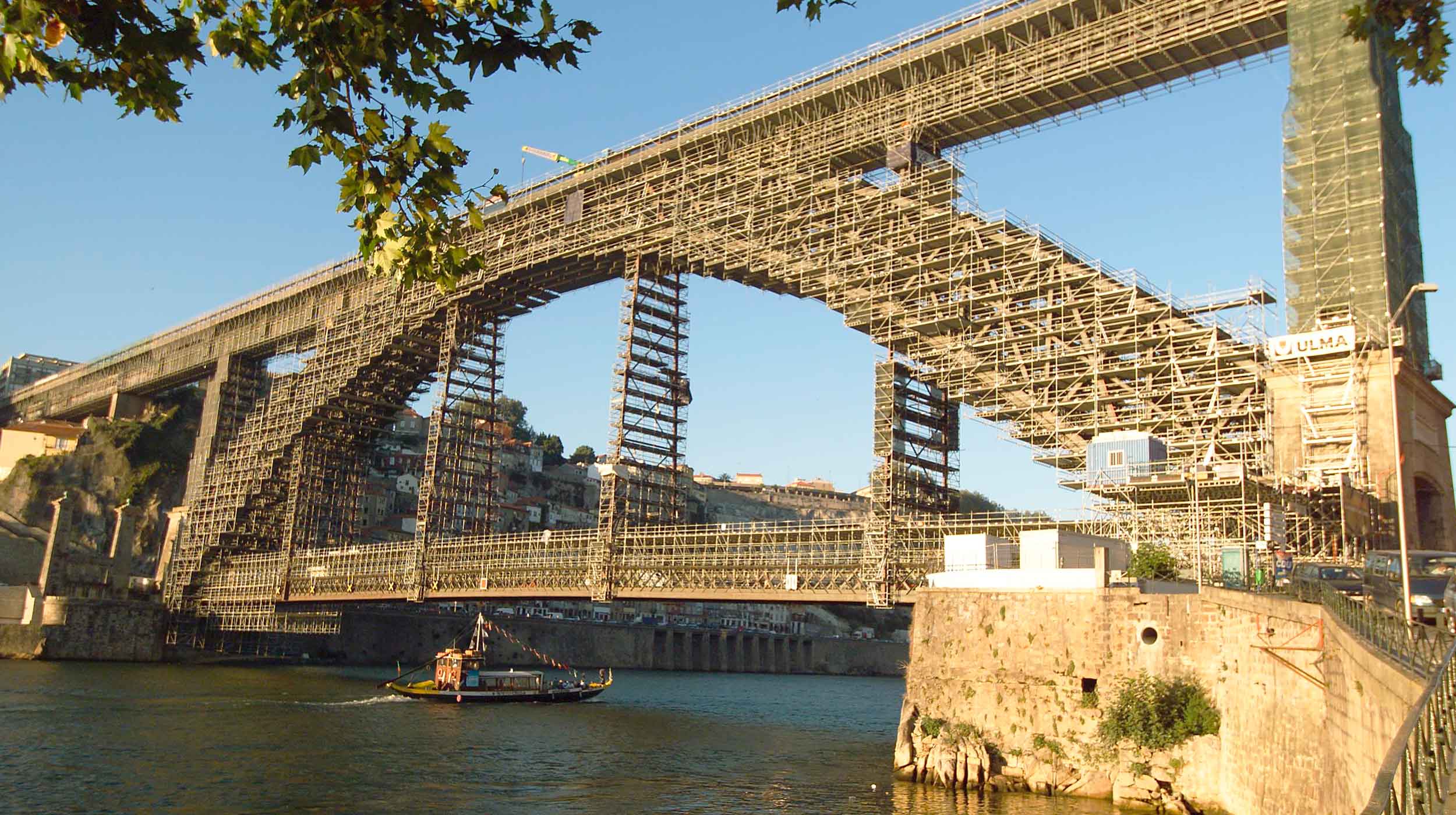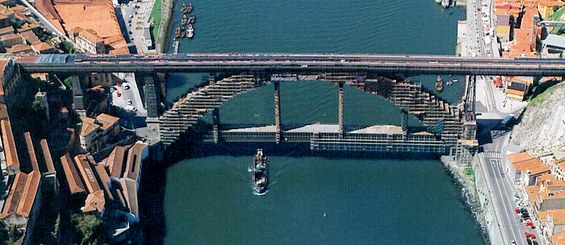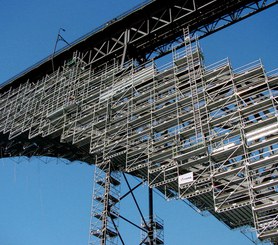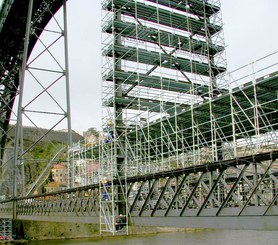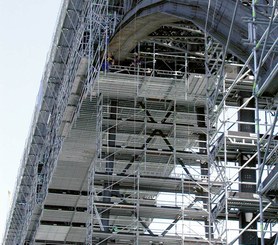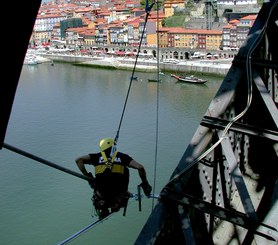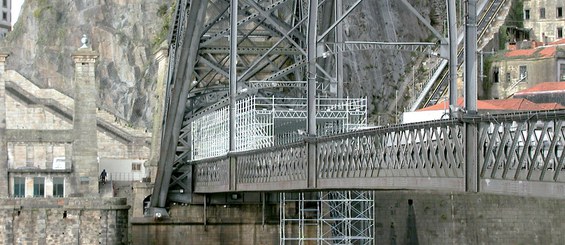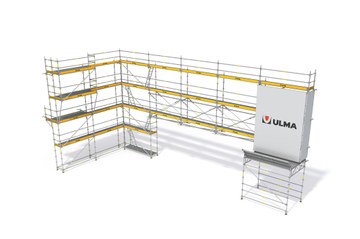Description
Among the various bridges in Oporto, this is the best known and most impressive one. Built over the Douro river, it connects the city's riverbank with the docks of Vila Nova de Gaia. Today, it is part of the Porto Historic District, declared a World Heritage Site by UNESCO.
The bridge is made up of two steel decks, the upper one with a length of nearly 390 meters and at 62 m over the river, and the lower one with a length of 174 meters and at 10 meters height. Both are held by a steel arch with a span of 172 meters between supports and five intermediate columns.
The 3,000 tons of steel of this emblematic bridge, inaugurated on October 31, 1886, were projected by the engineer Teofilo Seyrig, disciple of Gustave Eiffel. The Porto underground runs on the upper deck of this bridge a road connecting the two shores does it on the lower deck.
ULMA Solution
Given the magnitude of the bridge and its peculiar design, the erection of BRIO scaffolding for its restoration was a highly demanding challenge.
The entire bridge was covered thanks to BRIO's versatility, adapting it to the variable arch sections.
The work team made the best of its resources, overcoming the height difficulties, as well as the adverse weather conditions, the aquatic environment and the complex shapes.
The BRIO system's accessories made it possible to adapt the scaffolding to the complex arch geometry. Consoles, cantilevers, pedestrian walkway, trapdoor platform, ladders, and cover shield may be highlighted among these accessories. Thanks to this, the circulation of people and vehicles was not interrupted.
The workers safety was guaranteed despite the construction height. The system was equipped with covered working platforms, safety handrails and toe boards, therewith fulfilling the current legislation requirements. Additionally, the BRIO system included specific safety handrails to protect the worker in both the working level as well as in the upper one.

